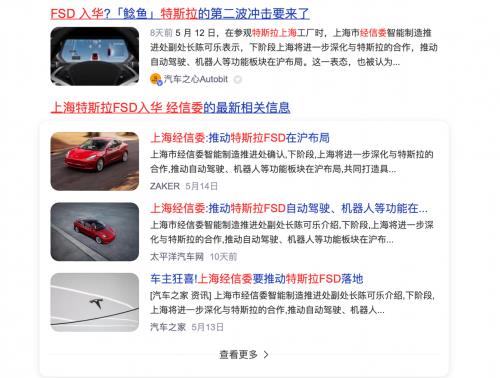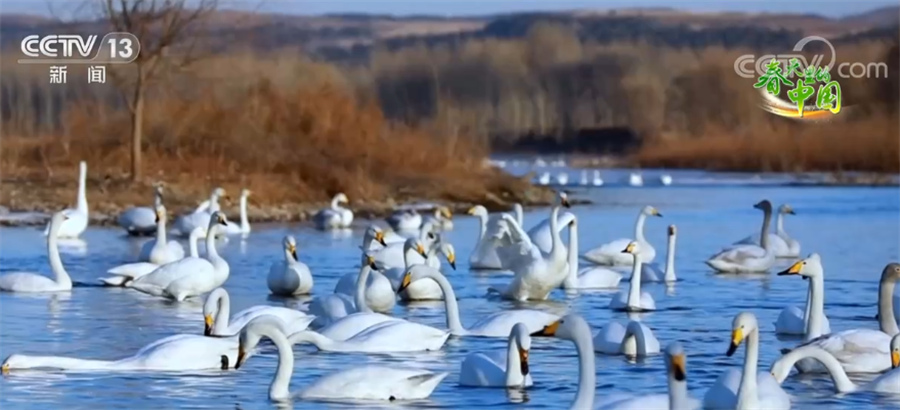Starting from July 28th, the 31st Summer Universiade held in Chengdu has become a stage attracting worldwide attention. More than 6,500 college athletes from 113 countries and regions around the world took dreams as horses, sweated and launched fierce competitive competitions on the field covering 18 major events and 269 minor events.
On the evening of July 28th, the opening ceremony of the 31st Summer Universiade was held in Chengdu, Sichuan. China university student sports delegation enters the stadium. Photography/Our reporter Han Haidan
The China University Sports Delegation sent 411 university athletes from more than 100 universities in 25 provinces and municipalities across the country to participate in the competition. Most of them participated in the Universiade for the first time, including Olympic champions such as Zhang Yufei and Zou Jingyuan, and Qin Haiyang who just won four gold medals and broke the world record at the World Swimming Championships.
China university athletes participating in the Universiade should not only complete the task and win the championship, but also show the spirit of China university students in the new era and the development achievements of university students’ sports, and become the messengers of Chinese and foreign exchanges through sports.
Before the founding of New China, the birthplace and development of modern competitive sports were in universities, and schools were veritable "cradles" of modern competitive sports. In the long history of more than 100 years, the development of college students’ sports in China has always made great progress despite the wind and rain.
During the development of sports in China, the measure of "separating sports from education" once made almost all professional athletes participate in the Universiade in a certain period of time. With the return of the ideological trend of "integration of sports and education" and its continuous advocacy, the concept of "Little Olympics" in the Universiade has gradually faded, and the pursuit of competitive achievements is no longer regarded as the whole of participating in the Universiade, and the Universiade has truly returned to college students.
The synchronous development of education, humanities, study and physical training is paid more attention by the whole society, which has a profound impact on the changes of Chinese people’s concepts and policies and the future trend of the development of college students’ physical education in China.
Early athletes were all college students.
Since most modern competitive sports originated from the West, from the end of 19th century to the beginning of 20th century, missionary schools and YMCA brought most sports, equipment, teaching methods and competition methods to China. After spreading, competitive sports developed in China mainly in the form of school sports. At that time, the outstanding players and coaches in various sports were basically students and young teachers.
For example, in 1895, the first director-general of the Tianjin YMCA disembarked from Tianjin and brought basketball from abroad. After the Dongmalu Club of the Tianjin YMCA, the first indoor basketball court in China was set up in 1914. Basketball first became popular in missionary schools, and then it became popular in major schools in Tianjin.
In the 1920s, Dong Shouyi, the "father of basketball in China", worked as a physical education teacher in Tianjin Nankai School. Dong Shouyi, who was obsessed with basketball, was in charge of training the basketball team and trained Tang Baokun, Li Guochen, Liu Jianchang, Wang Xiliang and Wei Pengyun. The Nankai school team, with the "Five Tiger Generals" as its team, has successively defeated Shanghai Hujiang University, the United States Navy Team and the University of St. Thomas in the Philippines in a series of competitions, making it famous in the Far East.
Dong Shouyi wrote China’s first basketball monograph, The Latest Basketball, and was elected as a member of the International Olympic Committee in 1947. He believes that the purpose of sports competition can not only focus on the generation of achievements and records, but also on technology. Instead, teachers and students can get physical and mental health from sports by participating in sports, participating in sports, feeling the good atmosphere brought by sports, and gaining aesthetic feeling and spirit through sports competition.
Liu Changchun, the first athlete in China to officially participate in the Olympic Games, just graduated from the Physical Education Department of Northeastern University in 1932 and participated in the Los Angeles Olympic Games. Liu Changchun’s coach, Song Junfu, then the head of the physical education department of Northeastern University, studied physics in the United States, and then studied in the physical education department of Springfield College, the birthplace of basketball. After returning to China, he served as the head of the physical education department and professor of Shanghai Hujiang University, Northeastern University, Shandong University and Sichuan University.
On August 5th, 2008, in Dalian, Liaoning Province, the hometown of China’s "first Olympic man" Liu Changchun, a bronze sculpture of Liu Changchun, 3.8m high, 4.5m long, 1.5m wide and weighing 2 tons, was unveiled in the Olympic Square to meet the public. Figure/Zhongxin
Mao Zhenming, the first dean of the School of Physical Education and Sports of Beijing Normal University and the chairman of the National School Sports League (teaching reform), once said: "The athletes at that time were actually college students. They represented the highest competitive level in the country and were all qualified college students."
After the founding of New China, the Party and the state attached great importance to school sports. In October 1949, the central people’s government put forward "new physical education". At this time, the main task of college physical education was to popularize and stimulate all students’ interest in sports. In the early 1950s, China’s university sports policy was mainly aimed at students’ physical health and personal hygiene. The state advocated popularizing sports in universities, emphasizing health promotion and developing good living habits. In 1954, the former State Sports Commission issued the Joint Instruction on Developing Mass Sports in Secondary and Higher Schools, which pointed out the direction for the development of college physical education and became the dominant idea for the development of school physical education at that time.
Liu Bo, director of the Sports Department of Tsinghua University, told China Newsweek that in the 1960s, the state adjusted the management mechanism of sports and education, so that the sports system and the education system operated separately. "Among them, the part of competitive sports, including the training and selection of athletes, as well as the organization and management of competitive sports competitions, is the responsibility of the State Sports Commission and local sports commissions at all levels. The sports system mainly relies on sports schools and colleges at all levels around the country, and is responsible for cultivating competitive sports talents. The development of competitive sports in ordinary colleges and universities has not been included in the national administrative plan, and has gradually separated from the national competitive sports system. "
Therefore, for a long time, the focus of college physical education stayed at the stage of advocating the popularization of physical education on campus.
In 1970s, China gradually returned to the international sports arena. In 1975, the establishment of China University Sports Association became a major landmark event. In the same year, China Sports Association joined the World University Sports Federation, four years before China returned to the International Olympic Committee. In 1977, the China Sports Association set up a delegation for the first time to participate in the World University Games held in Sofia, the Bulgarian capital, seven years before China played in the 1984 Los Angeles Olympic Games.
Walter WANG, the late former vice chairman of the Major Sports Association, once recalled to the media: "Since its establishment, the China University Sports Association was still managed by the then State Sports Commission. By the early 1980s, the domestic affairs of China Major Sports Association, such as the holding of domestic college students’ competitions, began to be handed over from the State Sports Commission to the State Education Commission, but the international affairs, such as teaming up for the World University Games, were postponed for nearly twenty years. "
This had its special historical background at that time. At the end of 1970s, China’s sports circle had just returned to the international sports world, and the national team athletes in various sports lacked international competition experience, and the Universiade, known as the "Little Olympics", was a rare opportunity to compete.
At the Universiade in 1977, Sun Jinfang, the former captain of the China women’s volleyball team who won five consecutive championships, was 22 years old and was a player of Nanjing Institute of Physical Education. Sun Jinfang once recalled: "At that time, there were few opportunities for the national team to go out to participate in the Games, and the Universiade was our first time to participate in the World Comprehensive Games. We have never met sports teams from so many countries before, especially the Cuban team. At that time, they were the’ dream team’ of women’s volleyball. We have been looking forward to it for a long time, and finally the Universiade provided an opportunity for us to communicate with them face to face. "
China Women’s Volleyball Team won the silver medal at the 1977 Universiade, which was generally regarded as the starting point of China Women’s Volleyball Team’s "five consecutive championships".
"At that time, the Universiade did have the saying of’ Little Olympics’ in China sports." Zou Zhenxian, a famous triple jumper from China who participated in Sofia in 1977 and Bucharest Universiade in 1981, told China Newsweek. "At that time, the track and field competitions were the highest in the world, that is, the Olympic Games, the track and field World Cup and the Universiade."
In both competitions, Zou Zhenxian was a player of Beijing Institute of Physical Education (now Beijing Sport University). It won the gold medal at the Universiade in 1981 with a score of 17.32 meters, setting a record for the triple jump at the Universiade, which was also the first track and field gold medal won by China athletes at the World Universiade.
Little known is that in 1981, Lang Ping, Li Ning and other China athletes participated in the 1981 Universiade in Bucharest. Lang Ping led the China women’s volleyball team to win the championship, while Li Ning won three gold medals in gymnastics.
Left: The track and field team of China University Student Sports Delegation took a group photo at the 1977 Universiade, and the fifth on the left is Zou Zhenxian. Chinese: Zou Zhenxian’s entry permit for the 1977 Universiade. Right: Zou Zhenxian’s entry permit for the 1981 Universiade. Figure/provided by respondents
"Integration of sports and education" breeds fruitful results
In 1980s, China ushered in the tide of reform and opening up, and gradually transformed into a market economy system. At the same time, the sports system and the education system have exposed a series of problems.
Among them, the outstanding problems are: the athletes in the sports system have only received sports training for a long time, and there is a lack of cultural education, which has left the impression of low cultural level to the outside world. In addition, it is also because many athletes only receive physical training for a long time. If they fail to win the national championship and world championship, they often have a "pain point" of single survival skills after retirement, which causes social concern and controversy at the level of employment placement.
Affected by this, if children’s sports talent is extremely outstanding since childhood, more and more parents no longer want their children to become athletes in terms of concept and consciousness, but prefer their children to receive academic education.
Furthermore, the old "training system of sports schools, provincial teams and national teams" in China sports system has been gradually shaken. Among them, some grass-roots sports schools began to find it difficult to recruit students year after year, which posed a challenge to the talent transfer of competitive sports in China.
In view of this situation, the former State Education Commission and the former State Sports Commission first appeared the trend of "integration of sports and education" (originally called the combination of sports and education or the combination of sports and education). At that time, the state advocated that colleges and universities could devote 1% of their annual budget to the construction of high-level sports teams, and the enrollment scale of sports teams in colleges and universities would not exceed 1% of the total undergraduate enrollment plan in the previous year. This is the initial exploration of the integration of sports and education in that era.
On December 27th, 1985, the former State Education Commission and the former State Sports Commission jointly held the "National Symposium on Amateur Sports Training for School Students" in Yexian County, Shandong Province, and the meeting formulated the "Plan for Developing Amateur Sports Training in Schools and Improving Sports Technical Level (1986-2000)" (hereinafter referred to as "Plan").
On the basis of the publication of the Plan, the former State Education Commission successively promulgated the Notice on Recruiting High-level Athletes in Some Ordinary Colleges and Universities in 1987 and the Administrative Measures on Training High-level Athletes in Pilot Colleges and Universities, and selected 51 colleges and universities to be allowed to start independently recruiting sports talents and set up high-level sports teams to undertake the function of helping the development of competitive sports in China.
However, at this time, the training of college sports special students is limited in capital and resources, and it is in the initial "exploration stage", and the competitive level of college sports can not support them to participate in world competitions and complete their tasks. As mentioned by Wang Gang earlier, the Universiade was still an important "training stage" in the sports system in the 1980s and 1990s, so the right to select athletes was still in the hands of the State Sports Commission (renamed the State Sports General Administration in 1998).
In 2001, the Universiade came to Beijing. As Beijing has just successfully applied for the 2008 Olympic Games, the sports system almost sent all the top athletes to play, reaching the peak of scale. At that time, the sports system regarded this Universiade as a preview of the Beijing Olympic Games, whether it was the organization of events or the results of competitions. Among them, the China University Basketball Team, led by Yao Ming, Wang Zhizhi and Bater, defeated the American University Basketball Team for the first time in history; 18-year-old Liu Xiang won his first career 110m hurdles world championship in 13.33 seconds. Li Na won three gold medals in tennis. In the end, the China university student delegation ranked first in the medal list with 54 gold medals, 25 silver medals and 24 bronze medals.
In the final of the 2001 Universiade, the China college students’ men’s basketball team lost to the Yugoslav college students’ team and missed the gold medal. Figure/Zhongxin
After the 2001 Beijing Universiade, the State Sports General Administration handed over the international affairs of major sports associations to the Ministry of Education in accordance with the relevant spirit. Since then, China Sports Association can independently send college students to participate in the Universiade. It was also from the 2001 Beijing Universiade that the concept of combining sports with education was more widely advocated in the domestic sports and education circles.
Walter WANG once recalled: "The institutional reform in the State Council, which began around 2000, made the division of functions between government departments clearer, and the student sports work further returned to the education department. However, this institutional reform is only an opportunity. More importantly, at that time, the sports level of college students in China has developed to a certain stage, and we have been able to participate in the activities of the Universiade. "
In the decade from 1990s to the beginning of 21st century, with the further reform and opening up of China society, the development of college students’ sports can be described as vigorous. The scale of colleges and universities with high-level athletes’ enrollment qualifications continued to expand, and in 2006 it was expanded to 235.
Tsinghua University, who has always attached importance to physical education since before liberation, has made great achievements in building high-level sports teams in domestic universities. Tsinghua University ranks first in the country in terms of enrollment items, the number of students and the diversity of team building modes.
Liu Bo introduced that as early as 1954, under the initiative of President Jiang Nanxiang (who once put forward the slogan: Work for the health of the motherland for 50 years), many sports teams in Tsinghua University were established, including track and field, skills, football, basketball and volleyball. After the policy of "Planning" was issued in 1987, Tsinghua University gradually resumed the establishment of college students’ teams in various sports, and also tried to build a dual-degree training system with Beijing Institute of Physical Education (now Beijing Sport University). In the late 1990s, Tsinghua University successively set up diving teams and shooting teams, and jointly established them with the swimming center and shooting and archery center of the State Sports General Administration.
Other colleges and universities outside Tsinghua University have also developed their own special sports. For example, Peking University has built a mountaineering team "Eagle Club", Beijing Institute of Technology has developed a football team, and Beijing University of Aeronautics and Astronautics and Fudan University have established volleyball teams, all of which are models for the construction of college sports teams in China.
The establishment of national college sports leagues has further stimulated the development of high-level sports teams in colleges and universities in China. 1998 was the "first year" of the establishment of China University Basketball League (CUBA). Tsinghua University, Peking University, Huaqiao University, Taiyuan University of Technology, Guangdong University of Technology, Zhejiang University and Xiamen University all regard basketball as a "power point" and make the basketball team a "business card" with high recognition.
In the summer of 2003, China participated in the Daegu Universiade, which was the first time that athletes were selected by the China Sports Association, which was in charge of the Ministry of Education. In the current competition, the China University Student Sports Delegation has generally realized that it is mainly college students. In many sports teams, college students from non-professional athletes account for a considerable proportion. The China University Football Team, which is composed of players from Beijing Institute of Technology, is the first time to be composed of a pure university campus student army. It once caused a sensation by defeating Brazil.
By the 2005 Izmir Universiade, Hu Kai, a student from Tsinghua University, won the men’s 100-meter championship and caused a sensation throughout the country, which became a "milestone event" in the history of college sports in China.
On August 21st, 2008, in the men’s 4×100 relay race of the Beijing Olympic Games, Hu Kai, a student from Tsinghua University, played for China and ran for 39.13 seconds to advance to the final. Photography/Our reporter Sheng Jiapeng
Hu Kai, currently the deputy director of the Sports Department of Tsinghua University, was admitted to Tsinghua University as a high-level athlete in the summer of 2001. After entering the school, he paid attention to both study and training, and his competitive ability was not inferior to that of professional athletes. Hu Kai participated in the national track and field championship and grand prix finals in 2004, winning the 100m and 200m championships. In the 2008 Beijing Olympic Games, Hu Kai was successfully selected for the national team and participated in the 100m and 4×100 relay races on behalf of the national team.
Hu Kai’s success proves that it is completely feasible to train high-level athletes on campus. After that, more and more outstanding sports talents in China were born from the campus, which became an important achievement of the integration of sports and education in China.
At present, whether the national sports events such as the College Basketball League are booming or more students like Hu Kai are selected into the national team, to a great extent, it has promoted the sports cause of colleges and universities in China to a higher standard. Because, compared with campus sports in developed countries such as the United States, the industry will find that college sports in the United States can completely represent the competitive sports level of the whole country, and the growth process of athletes has not been divorced from the normal education system.
An outstanding advantage of American college physical education is its commercial operation ability. According to the financial report statistics of NCAA, in 2021, the total income of college sports in the United States exceeded $1.1 billion, and nearly 90% of the income came from the broadcast of the "Crazy March" basketball game (every March, the NCAA entered the most intense single-game elimination stage). In 2010, NCAA signed a 14-year, 10.8-billion-dollar contract with broadcasters such as CBS. American college sports are deeply rooted in the hearts of the people, and it is expected to continue to be favored by broadcasters in the form of long-term contracts after the contract expires in 2024.
The vast majority of these commercial income is to continuously feed back colleges and universities. For example, the well-known "Pacific Twelve Schools Alliance" in the United States, among which the famous universities such as UCLA and Stanford University have an average annual competitive sports fund of tens of millions of dollars. The school uses this generous fund to recruit the best students in the United States, pay sports scholarships, pay the salaries of coaches and trainers, improve the level of scientific research support, build university stadiums and training facilities, and give students the best training treatment to cultivate them into talents.
Universiade returns to college students.
In the subsequent Universiade, the China delegation, with college students as the main body, was basically stable in the top three, including Bangkok in Thailand, Belgrade in Serbia, Shenzhen in China, Kazan in Russia, Gwangju in South Korea, Taipei in China and Naples in Italy. After many Universiade, the concept of "Universiade Returning to College Students" has become more and more popular.
"After decades of changes, the term’ Little Olympics’ has long faded. At the recent Universiade, competitive achievements are important, but they are no longer the whole of this event. " Zou Zhenxian said, "Perhaps many college students will not pursue the career of professional athletes in the future, but participating in the Universiade is also a valuable asset in their life. The Universiade is not only a stadium, but also a platform for countries all over the world to show their cultures and communicate with each other. "
Entering a new historical stage, the sports career of college students in China has further developed.
In 2020, 283 colleges and universities across the country have been allowed to recruit high-level sports teams, which is more than five times that of the early year of 1987. After Hu Kai, high-level sports teams in colleges and universities have continuously trained many world champions and Olympic champions for the country. For example, the first gold medal winner of the 2020 Tokyo Olympic Games is Yang Qian from the Tsinghua University Shooting Team.
It is understood that after years of development, Tsinghua University has built its own school team "pyramid". By the end of 2020, there are four Class A teams (track and field, shooting, men’s basketball and women’s basketball) representing the highest level sports teams of China university students and even professional teams, seven Class B teams (including women’s volleyball and fencing) representing the high level sports teams of Beijing university students, and 43 Class C teams (including table tennis and ice hockey) representing the outstanding level sports teams among ordinary students with a broad mass base.
The Chinese College Basketball League has been the top student league and amateur league in China in terms of competition scale, competition level, talent incubation and so on, and it provides talents for CBA league every year. Nowadays, the college basketball league has continuously precipitated the sports culture atmosphere of college students in China, and has become the basketball temple in the minds of college students all over the country. According to the data of some online platforms, more than 1 billion people watch the live broadcast of the game through TV and Internet every year, and the audience watching the game on the spot has reached 2 million.
On July 31st, 2022, in the 24th China University Basketball League (CUBA) men’s first-class league national finals held in Chongqing, Tsinghua University beat Guangdong University of Technology 89-86, and won the championship for three consecutive years. Figure/provided by respondents
At this stage, the development of college students’ sports in China has made remarkable achievements, and the holding of this Universiade in Chengdu will undoubtedly be a positive guide to the progress of school sports in China. At the same time, it is also necessary to take this opportunity to continue to solve some problems at the level of fairness.
According to statistics, since the founding of New China, China has issued 174 documents on school physical education and students’ physical health. On September 24th, 2021, the Guiding Opinions on Further Improving and Standardizing the Examination Enrollment of High-level Sports Teams in Colleges and Universities (hereinafter referred to as the Guiding Opinions) jointly issued by the Ministry of Education and the State Sports General Administration is one of the most important policies at this stage, which will strictly control the examination enrollment and daily management of high-level sports teams in colleges and universities.
The Guiding Opinions clearly pointed out that there are some problems in the enrollment of high-level sports teams in colleges and universities, such as poor cultural achievements of individual athletes, low level of sports competition, irregular examination organization in individual colleges and universities, lax school management, and falsification of technical grade certificates of individual local athletes.
Among them, there are two most controversial phenomena in the whole society: First, students with low competitive level get the drop-off index of famous schools by fraudulent means such as falsification of athletes’ technical grade certificates, and immediately quit sports teams and change their majors after entering school, which also makes some famous schools with high-level sports teams enrolling a large number of students every year unable to transport sports talents for the country. Second, the truly high-level athletes can only enter the prestigious schools by single stroke or walk because of their unsatisfactory results in cultural courses, but they are unable to complete their studies after entering the school. Individual universities turn a blind eye to this and seriously waste the educational resources of prestigious schools.
The Guiding Opinions has launched a series of measures with strong control: from 2024, only those who have won the title of national first-class athletes (including) or above can apply for high-level sports teams. The enrollment items of high-level sports teams in colleges and universities will be gradually included in the national unified examination to improve the performance requirements of cultural courses. Among them, the "world-class university construction university" requires candidates’ college entrance examination scores to reach the minimum control score of undergraduate admission in the source province when recruiting high-level sports teams; Other colleges and universities require candidates’ college entrance examination scores to reach 80% of the minimum control score for undergraduate admission in the province of origin. In addition, from 2024, all professional tests will be included in the national unified examination, which will be organized and implemented by the State Sports General Administration, and colleges and universities will no longer organize relevant school examinations.
In recent years, the Ministry of Education and the State Sports General Administration have successively included football and swimming events of high-level sports teams in colleges and universities in the national unified examination, so as to improve the fairness and scientificity of professional tests and get favorable comments from candidates and parents.
If the candidate’s competitive level is really excellent, the Guiding Opinions still leaves a "path" to allow exceptional admission: "For candidates with outstanding achievements in physical education and special training potential, colleges and universities are allowed to explore the establishment of an exceptional admission mechanism for cultural courses, and exceptional admission will be subject to strict supervision by the society. And in principle, the academic level requirements of high-level sports team students and ordinary students should be consistent, and they should participate in the sampling inspection of undergraduate graduation thesis (design). Colleges and universities can actively create conditions for high-level sports team students to complete their studies without lowering academic standards and ensuring the quality of education and teaching through credit system, extending academic system, personalized teaching and remedial classes. "
Relevant experts pointed out that the promulgation of the Guiding Opinions aims at eliminating the problems existing in educational equity, but its fundamental goal has not changed. The policy issued by the Ministry of Education and the State Sports General Administration has been clear for many times: "The purpose of building high-level sports teams in colleges and universities is to cultivate all-round high-level sports talents for the country, and the goal is to complete the tasks of participating in the World University Games and major international and domestic sports competitions, and contribute to the national Olympic glory plan and the sustainable development of competitive sports", and clearly put forward "strengthening the combination of education and sports".
Many interviewed experts believe that college sports can continue to be a useful supplement to the cultivation of high-level sports talents for a long time to come.
Zhong Bingshu, former president of the Capital Institute of Physical Education, told China News Weekly that "the integration of physical education and education reflects the country’s hope to guide the traditional training mode of competitive sports talents to a brand-new mechanism for cultivating competitive sports talents through the education system, give full play to the function of school physical education as universal education, and rely on its own resource advantages to cultivate high-level sports teams and student athletes who are good at competition and learning."
In Zhong Bingshu’s view, the future of physical education will be further integrated, and the future will be a trend for a long time. School physical education will play an increasingly important role in the training of competitive sports talents, and the training mode of deep integration of professional sports teams and high-level sports training and competition system in colleges and universities will be more perfect.
In the long run, with the deepening of the integration of sports and education and the increase of investment, the overall competitive training quality of campus sports will be improved day by day. Most teenagers will choose the road of campus sports and receive physical training while studying. Under the premise of ensuring basic achievements, many student athletes with excellent academic and training can also be born. The overall development level of campus sports in China will gradually approach the developed countries and become the main channel for the selection of sports talents in China.
Published in China Newsweek magazine, No.1103, August 7, 2023.
Magazine title: exploring the road of "integration of sports and education"
Author: Ye Everest



































